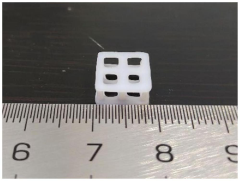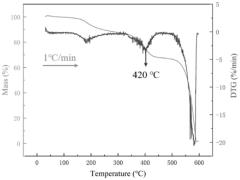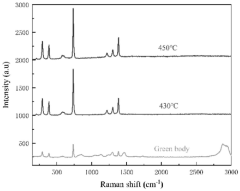Future of PTFE in Aerospace Applications
PTFE Aerospace Evolution
Polytetrafluoroethylene (PTFE) has been a cornerstone material in aerospace applications since its introduction in the mid-20th century. Its unique properties, including high temperature resistance, low friction, and chemical inertness, have made it invaluable in various aerospace components and systems.
The evolution of PTFE in aerospace can be traced through several key stages. In the 1960s and 1970s, PTFE was primarily used in seals, gaskets, and lubricants for aircraft engines and hydraulic systems. Its ability to withstand extreme temperatures and maintain its properties in harsh environments made it an ideal choice for these applications.
The 1980s and 1990s saw an expansion of PTFE use in aerospace, particularly in fuel systems and electrical insulation. As aircraft designs became more sophisticated, PTFE's chemical resistance and dielectric properties became increasingly important. This period also marked the beginning of PTFE's use in composite materials, enhancing the performance of structural components.
In the early 2000s, advancements in PTFE manufacturing techniques led to the development of modified PTFE materials with enhanced properties. These new formulations offered improved wear resistance, lower cold flow, and better dimensional stability, expanding PTFE's applications in aerospace even further.
The past decade has seen a focus on developing PTFE nanocomposites and thin films for aerospace applications. These innovations have enabled the creation of lighter, stronger, and more durable components, contributing to overall aircraft efficiency and performance.
Looking towards the future, PTFE is poised to play an even more critical role in aerospace applications. Emerging trends include the development of self-healing PTFE materials, which could significantly extend the lifespan of aerospace components. Additionally, research into PTFE-based smart materials that can respond to environmental changes is showing promising results for next-generation aerospace systems.
The integration of PTFE with advanced manufacturing techniques, such as 3D printing, is opening up new possibilities for complex geometries and customized components in aerospace design. This convergence of material science and manufacturing technology is expected to drive innovation in aircraft and spacecraft construction in the coming years.
As the aerospace industry continues to push the boundaries of performance and efficiency, PTFE's role is likely to evolve further. Its unique combination of properties makes it an ideal candidate for addressing the challenges of future aerospace applications, from hypersonic flight to space exploration.
Aerospace Market Demand
The aerospace market demand for PTFE (Polytetrafluoroethylene) is experiencing significant growth, driven by the material's unique properties and the expanding aerospace industry. PTFE's exceptional heat resistance, chemical inertness, and low friction coefficient make it an ideal choice for various aerospace applications, including seals, gaskets, bearings, and insulation materials.
The global aerospace industry is projected to witness substantial growth in the coming years, with increasing air travel demand and rising defense budgets worldwide. This growth directly translates to a higher demand for advanced materials like PTFE. The commercial aviation sector, in particular, is expected to be a major driver for PTFE demand, as airlines seek to improve fuel efficiency and reduce maintenance costs through the use of lightweight and durable materials.
In the defense aerospace sector, the demand for PTFE is also on the rise. Military aircraft and spacecraft require materials that can withstand extreme conditions, and PTFE's ability to perform in high-temperature and chemically aggressive environments makes it an essential component in many defense applications.
The space exploration industry, though smaller in market size compared to commercial aviation, is showing promising growth potential for PTFE applications. As space agencies and private companies increase their activities in satellite launches and deep space exploration, the demand for reliable and high-performance materials like PTFE is expected to grow.
Emerging trends in the aerospace industry are further fueling the demand for PTFE. The push towards more electric aircraft systems, for instance, requires materials with excellent electrical insulation properties, where PTFE excels. Additionally, the growing focus on sustainability in aviation is driving the need for materials that can contribute to improved fuel efficiency and reduced emissions, areas where PTFE's low friction properties can play a significant role.
The Asia-Pacific region is anticipated to be a key growth market for PTFE in aerospace applications. The rapid expansion of the commercial aviation sector in countries like China and India, coupled with increasing defense spending in the region, is creating substantial opportunities for PTFE manufacturers and suppliers.
However, the aerospace market demand for PTFE is not without challenges. The industry's stringent quality and performance requirements necessitate continuous innovation and improvement in PTFE formulations and manufacturing processes. Moreover, the ongoing development of alternative materials and composites poses a potential threat to PTFE's market share in certain applications, driving the need for PTFE manufacturers to focus on product differentiation and value-added solutions.
PTFE Challenges in Space
Polytetrafluoroethylene (PTFE), commonly known as Teflon, has been a crucial material in aerospace applications for decades. However, its use in space environments presents unique challenges that demand innovative solutions. The extreme conditions of space, including vacuum, radiation, and temperature fluctuations, push PTFE to its limits and expose its vulnerabilities.
One of the primary challenges faced by PTFE in space is outgassing. In the vacuum of space, PTFE can release volatile compounds, potentially contaminating sensitive equipment and optical surfaces. This phenomenon can lead to degradation of spacecraft components and compromise mission objectives. Engineers must develop strategies to mitigate outgassing effects, such as pre-treatment processes or alternative formulations of PTFE.
Atomic oxygen erosion poses another significant threat to PTFE in low Earth orbit. The highly reactive atomic oxygen present in this region can rapidly degrade PTFE surfaces, leading to material loss and structural weakening. This erosion can compromise the integrity of thermal insulation, electrical insulation, and other critical components that rely on PTFE's unique properties.
The extreme temperature variations encountered in space environments also present challenges for PTFE applications. While PTFE exhibits excellent thermal stability, the rapid and severe temperature swings experienced during orbital cycles can induce thermal stress and potential material fatigue. Engineers must account for these thermal effects when designing PTFE-based components for spacecraft.
Radiation exposure in space is another factor that can impact PTFE performance. High-energy particles and electromagnetic radiation can cause chemical changes in the polymer structure, potentially altering its mechanical and electrical properties over time. Understanding and mitigating these radiation-induced effects is crucial for ensuring the long-term reliability of PTFE components in space applications.
The need for lightweight materials in aerospace design conflicts with PTFE's relatively high density compared to some alternative materials. This challenge drives research into developing PTFE composites or modified formulations that maintain its desirable properties while reducing overall weight. Balancing performance characteristics with mass constraints is an ongoing area of investigation for aerospace engineers.
As space missions become more ambitious and long-duration, the longevity and reliability of PTFE components become increasingly critical. Researchers are exploring ways to enhance PTFE's durability and resistance to degradation in space environments, including surface treatments, additives, and novel manufacturing techniques. These efforts aim to extend the operational life of PTFE-based systems and reduce the need for maintenance or replacement during extended missions.
Current PTFE Solutions
01 PTFE manufacturing processes
Various methods for producing PTFE are described, including polymerization techniques, extrusion processes, and molding methods. These processes aim to improve the quality, efficiency, and properties of the resulting PTFE materials.- PTFE manufacturing processes: Various methods for producing PTFE are described, including polymerization techniques, extrusion processes, and molding methods. These processes aim to improve the quality, efficiency, and properties of the resulting PTFE materials.
- PTFE composite materials: PTFE is combined with other materials to create composite structures with enhanced properties. These composites may include reinforcing fibers, nanoparticles, or other polymers to improve mechanical strength, thermal stability, or electrical properties.
- Surface modification of PTFE: Techniques for modifying the surface of PTFE materials are explored to enhance their adhesion, wettability, or compatibility with other materials. These modifications may involve chemical treatments, plasma processing, or the application of coatings.
- PTFE in membrane technology: PTFE is utilized in the development of advanced membrane technologies for various applications, including filtration, separation, and water treatment. The unique properties of PTFE, such as its hydrophobicity and chemical resistance, are exploited in these membrane systems.
- PTFE in electronic and electrical applications: The use of PTFE in electronic and electrical components is explored, leveraging its excellent dielectric properties and thermal stability. Applications may include insulation materials, printed circuit boards, and high-frequency components.
02 PTFE composite materials
PTFE is combined with other materials to create composite structures with enhanced properties. These composites may include reinforcing fibers, nanoparticles, or other polymers to improve mechanical strength, thermal stability, or specific functional characteristics.Expand Specific Solutions03 Surface modification of PTFE
Techniques for modifying the surface properties of PTFE are explored, including chemical treatments, plasma processing, and coating applications. These modifications aim to enhance adhesion, wettability, or other surface-dependent properties of PTFE materials.Expand Specific Solutions04 PTFE in membrane technology
PTFE is utilized in the development of advanced membrane technologies for various applications, including filtration, separation, and gas diffusion. The unique properties of PTFE, such as its hydrophobicity and chemical resistance, are leveraged in these membrane designs.Expand Specific Solutions05 PTFE recycling and environmental considerations
Methods for recycling and reprocessing PTFE materials are developed to address environmental concerns and improve sustainability. These processes aim to reduce waste and recover valuable fluoropolymer materials from end-of-life products.Expand Specific Solutions
Aerospace PTFE Players
The future of PTFE in aerospace applications is characterized by a competitive landscape in a mature yet evolving market. The industry is in a growth phase, driven by increasing demand for high-performance materials in aerospace. Major players like AGC, Inc., 3M Innovative Properties Co., and W. L. Gore & Associates, Inc. are leading the technological advancements, focusing on enhancing PTFE's properties for aerospace-specific requirements. The market size is expanding, with a growing emphasis on lightweight, heat-resistant, and durable materials. The technology's maturity is high, but continuous innovation by companies such as DuPont de Nemours, Inc. and DAIKIN INDUSTRIES Ltd. is pushing the boundaries of PTFE applications in aerospace, indicating a dynamic and competitive future landscape.
AGC, Inc. (Japan)
3M Innovative Properties Co.
PTFE Innovations
- A method involving radical suspension-polymerization of tetrafluoroethylene with another fluoromonomer in an aqueous medium using specific chain transfer agents like methane, ethane, and hydrofluorocarbons, along with a radical polymerization initiator, to produce a copolymer with high melting points and improved mechanical properties while avoiding coloration and solvent use.
- Using light-curing 3D printing technology combined with Creo software to design the lattice structure, using materials such as polytetrafluoroethylene dispersion, cross-linking agent, photosensitive resin monomer and photoinitiator, and improving mechanics through multi-stage heat treatment (degreasing, sintering, recrystallization) performance, reduce the heat treatment temperature of the blank, and enhance printing accuracy and size control.
PTFE Environmental Impact
The environmental impact of PTFE in aerospace applications is a critical consideration as the industry moves towards more sustainable practices. PTFE, while offering exceptional performance characteristics, presents several environmental challenges throughout its lifecycle. During production, the use of perfluorooctanoic acid (PFOA) as a processing aid has raised concerns due to its persistence in the environment and potential health risks. Although many manufacturers have phased out PFOA, alternative processing aids may still have environmental implications that require ongoing assessment.
In aerospace applications, PTFE's durability and long service life contribute to reduced material consumption and waste generation over time. However, the material's resistance to degradation poses challenges for end-of-life management. PTFE is not biodegradable and can persist in the environment for extended periods if not properly disposed of or recycled. The aerospace industry is increasingly focusing on developing effective recycling methods for PTFE components, including mechanical recycling and chemical decomposition techniques.
The incineration of PTFE waste, while sometimes employed, can lead to the release of harmful substances such as hydrogen fluoride and other fluorinated compounds. This necessitates stringent emission control measures and specialized disposal facilities. As a result, the aerospace sector is exploring alternative disposal methods and investigating the potential for closed-loop recycling systems to minimize environmental impact.
PTFE's low friction properties contribute to improved fuel efficiency in aerospace applications, indirectly reducing carbon emissions during aircraft operation. However, the production of PTFE is energy-intensive, and the raw materials used in its manufacture are derived from non-renewable resources. This has prompted research into bio-based alternatives and more energy-efficient production processes to mitigate the material's carbon footprint.
The future of PTFE in aerospace applications will likely involve a balance between its performance benefits and environmental considerations. Ongoing research is focused on developing more environmentally friendly PTFE formulations, improving recycling technologies, and exploring sustainable alternatives that can match PTFE's unique properties. As regulatory pressures increase and sustainability becomes a key driver in aerospace innovation, the industry is expected to invest in lifecycle assessments and eco-design principles to optimize PTFE usage and minimize its environmental impact.
PTFE Certification Process
The PTFE certification process for aerospace applications is a rigorous and comprehensive procedure designed to ensure the material's suitability and reliability in critical aerospace environments. This process typically involves multiple stages of testing, documentation, and validation to meet stringent industry standards and regulatory requirements.
Initially, the certification process begins with material characterization. This involves extensive testing of PTFE's physical, chemical, and mechanical properties under various conditions that simulate aerospace environments. Tests may include thermal stability assessments, outgassing evaluations, and resistance to radiation and extreme temperatures.
Following material characterization, the PTFE undergoes performance testing specific to its intended aerospace application. This may include tests for wear resistance, friction coefficients, and durability under high-stress conditions. For applications involving fuel systems or hydraulic components, additional tests for chemical compatibility and permeability are conducted.
The next stage involves environmental testing, where PTFE samples are subjected to simulated aerospace conditions. This includes exposure to UV radiation, ozone, and rapid temperature fluctuations. The material's performance and degradation characteristics are closely monitored and documented throughout these tests.
Quality control and manufacturing process validation form a crucial part of the certification process. This ensures that the PTFE production methods consistently yield material that meets the required specifications. It often involves audits of manufacturing facilities and implementation of stringent quality management systems.
Documentation plays a vital role in the certification process. Detailed reports of all tests, manufacturing processes, and quality control measures must be compiled and submitted for review. This documentation serves as evidence of the material's compliance with industry standards and regulatory requirements.
Regulatory bodies, such as the Federal Aviation Administration (FAA) or the European Union Aviation Safety Agency (EASA), review the submitted documentation and may require additional testing or clarification. Their approval is necessary for the PTFE to be certified for use in aerospace applications.
Once certified, ongoing compliance monitoring is typically required. This involves periodic re-testing and audits to ensure that the PTFE continues to meet the certified standards throughout its production lifecycle. Any significant changes to the manufacturing process or material composition may necessitate re-certification.
The PTFE certification process for aerospace applications is an evolving procedure, adapting to new technologies and emerging industry requirements. As aerospace technology advances, certification standards are regularly updated to address new challenges and ensure the highest levels of safety and reliability in the use of PTFE in critical aerospace components.


